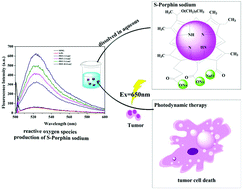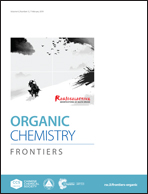Synthesis and evolution of S-Porphin sodium as a potential antitumor agent for photodynamic therapy against breast cancer
Abstract
Photodynamic therapy (PDT) is a light activated modality that works well for many diseases, particularly antitumor treatment. A photosensitizer is a great determinant of the PDT outcome. Nowadays significant efforts have been focused on developing a new photosensitizer. In the current study, we present a novel water-soluble formulation of the chlorin derivative S-Porphin sodium (S-PS), based on several chemical reactions from a natural substance, chlorophyll-a. 1H NMR, HPLC and spectrophotometry demonstrated the high purity and structural features of S-PS. The synthetic process did not disturb the characteristic absorption of chlorins at ∼650 nm. In vitro, under laser irradiation in saline buffer, S-PS produced much higher singlet oxygen than the commonly used protoporphyrin, hematoporphyrin, hematoporphyrin monomethyl ether and chlorin e6, and only slightly lower than the clinically approved hydrophobic sensitizer HPPH. Cellular analysis suggests S-PS accumulated in the mitochondria of breast cancer cells and triggered cell apoptosis. The in vivo pharmacokinetics indicate that S-PS metabolized quickly and accumulated in tumors a few hours post administration. S-PS mediated PDT suppressed tumor growth and prolonged tumor bearing mice survival time as the PDT dose increased, which showed significant tumor inhibition and better systemic safety compared with HPPH-PDT under the same conditions. These findings indicate that S-PS could be a potential sensitizer in future clinical PDT and other activated cancer therapy methods.



 Please wait while we load your content...
Please wait while we load your content...